
Ghost Ships of the Baltic Sea – SS Cap Guir, featured in the book
A stunning picture book
In the timeless, breathtaking picture book – Ghost Ships of the Baltic Sea – you are more of an observer first. The text complements the pictures. We see how the drama unfolded, how lives ended – sometimes the crew’s remains can still be seen – how hopeful expeditions came to an abrupt end.
Each wreck is there for a reason – be it war, accident, or bad weather – but they are testimonials to issues we still face today.
Time in a capsule
A fantastic team of divers, who are behind several of the most eye-catching wreck discoveries in the Baltic Sea in recent decades, bring us to the most spectacular shipwrecks with stunning pictures which not only document the finds but also bring back history to the surface of time.
Diving in one of these wrecks feels like opening a window into time. Or a time capsule, transporting us back dozens and even hundreds of years, says one of the divers.
Here follows an excerpt from the book, a digital dive into the world beneath the surface.
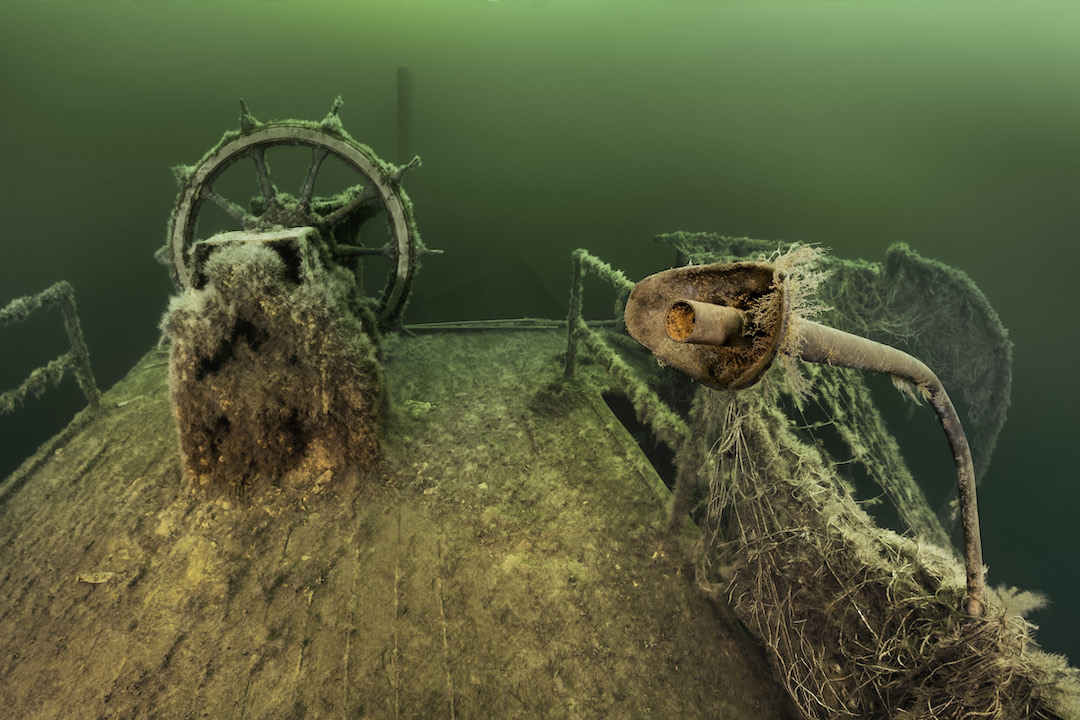 Photographer: Jonas Dahm
Photographer: Jonas Dahm
The SS Maia, a German steamship 70 m (230 ft) long, had been in service for 17 years in September 1901. At three o’clock one morning, she was struck without warning by the Afrika, another German steamship, in heavy fog near the southern tip of the island of Öland.
The Afrika continued on its way, leaving the crew of the Maia to their fate. Three lifeboats were launched from Maia. All 17 people onboard escaped watching the Maia sink to the seabed over 55 m (180 ft) below the surface a short time later that day by a passing Dutch steamship.
The remains of countless nets that once covered the entire bridge of the Maia hover behind the ship’s speaking tube. One of the masts is visible in the distance.
Stage 1 of a dive
We get ready to board the Triad, our diving vessel. We go through all our gear to ensure everything is intact, watertight, and working correctly.
We dive with JJ CCR machines. They are “Closed Circuit Rebreathers,” which filter carbon dioxide from exhaled air and recirculate it in a closed loop. Oxygen and a diving gas mix containing helium are added automatically during the dive. As part of our preparations, we repack soda lime in the filter and check the gas levels. We enter data on our gas and mix and depth in our dive computers. We have reserved gas supplies in case of difficulties.
We go over our objectives and allocate tasks. We study any diagrams or photos that may be available. We talk about unique features on the site and especially any hazards. We check and prepare our camera equipment.
 Diver Johan Alexandersson diving at the wreck of SS Maia, photography by Jonas Dahm
Diver Johan Alexandersson diving at the wreck of SS Maia, photography by Jonas Dahm
We approached the wreck along its foremast and saw Johan Alexandersson shining his light from the starboard side next to the cargo bay, shrouded in fishing nets. Two seals have become tangled in the fishing net on the port side and drowned. The large ship’s wheel stands proudly on the bridge. The rest of the wreck vanishes in the green haze.
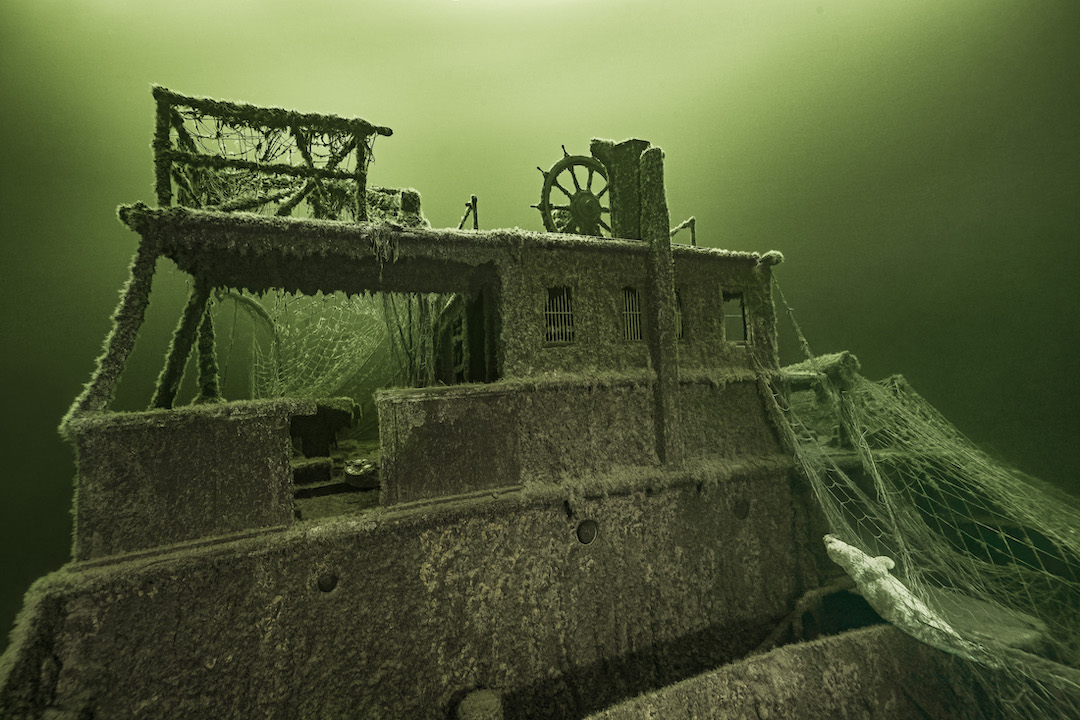 photography by Jonas Dahm
photography by Jonas Dahm
This photo shows what Johan Alexandersson was looking at when he was by the cargo bay. The engine telegraph is visible through the opening in the balustrade, where it is lying on the lifeboat deck under the starboard bridge wing. Light from the surface filters through and highlights the nets and rails. The top of the bridge also used to be covered in several layers of fishing nets, new and old. We removed most of them to permit a better view of the remains of the bridge.
Stage 2 of a dive
It is crucial to ensure the divers descend in the right place, especially on deeper dives. Getting in right from the start saves time and energy. Of course, it’s also vital for the crew on our diving boat to know where the divers are as they come up. We descend and come up along the same line. It is our “umbilical cord.”
We begin with help from exact positioning tools in combination with high-resolution mapping sonar. We put down a 25-kg (55-lb) weight near the wreck site. This weight has a rope attached to it that is the correct length for the water depth at the site. A big orange buoy is fastened to the top of the rope and floats on the surface.
Once the divers have their gear on and are ready at the stern of the diving vessel, they are dropped off as close to the buoy as possible.
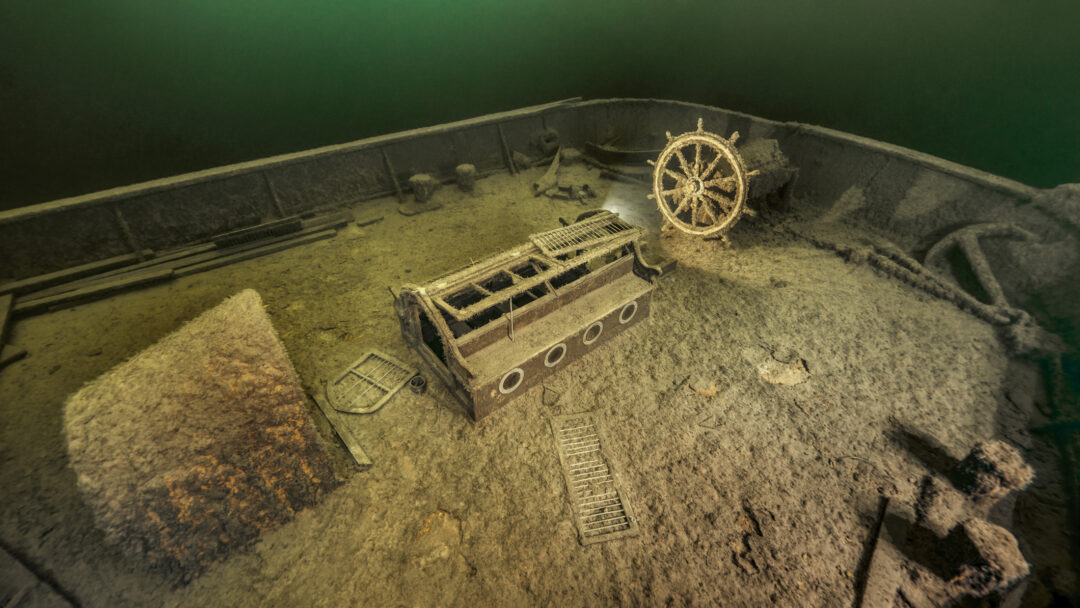 The Auxiliary wheel at the far end of the stern. Photography by: Jonas Dahm
The Auxiliary wheel at the far end of the stern. Photography by: Jonas Dahm
The auxiliary wheel is at the far end of the stern. An anchor lies next to it. In front of the wheel is a skylight for the officers’ lounge. The windows open to let fresh air in. The skylight also served as a bench, with room to sit along each side. On the left in this photo is a sheltered staircase leading down to the lounge and the officers’ cabins.
The Maia is similar to the Livonia and the Rumina (featured in the book) but in much better condition. That is probably because the Maia lies at a greater depth.
Stage 3 of a dive
Still, on the surface near the buoy, we double-check that everything is watertight and working – and still attached to us after jumping into the water: the suit, breathing apparatus, other equipment, and camera.
It takes around two minutes to descend 55 m (180 ft) from the surface. The actual time varies depending on factors such as the time it takes for your ears to adjust. On the way down, we switch on our lights, check our dive computers and keep an eye on our cameras and equipment.
About 15 meters (50 ft) above the seabed, one of the divers fastens a bright flashing beacon to the guiding rope. It will help us find our way back to the rope.
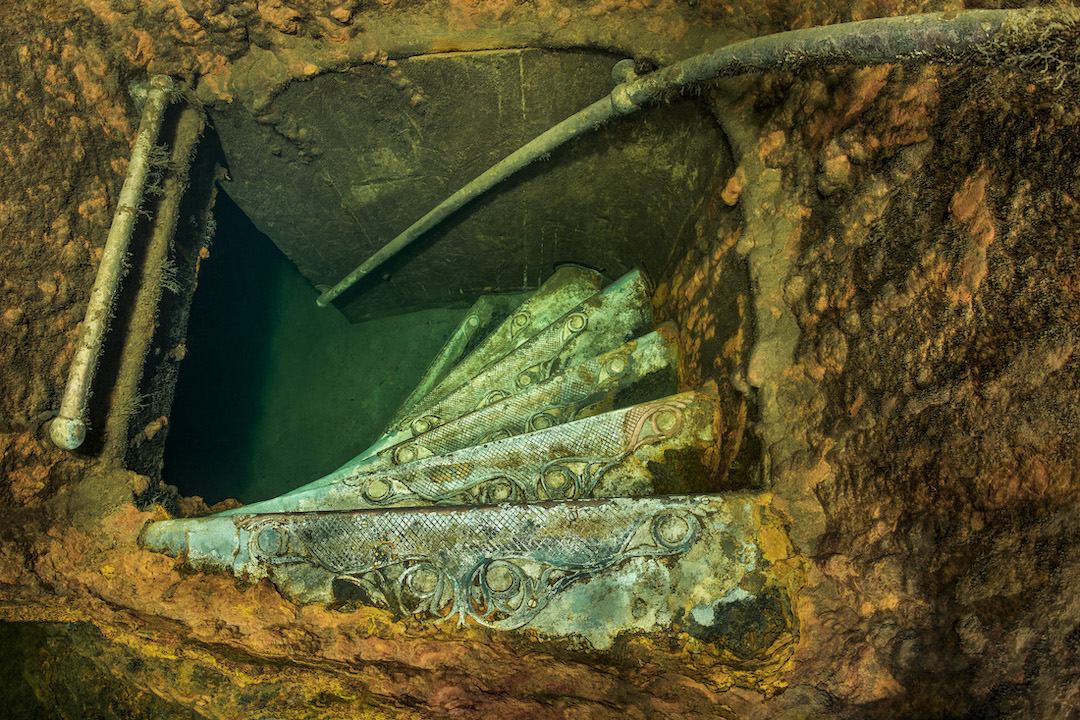 Staircase leading down from the deck of the SS Maia. Photographer: Jonas Dahm
Staircase leading down from the deck of the SS Maia. Photographer: Jonas Dahm
Sometimes even stairs can be fascinating! This is a fantastic spiral staircase with decorative treads of a style you will not find today in our day and age. It leads from the aft deck to the officers’ lounge and cabins.
Stage 4 of a dive
In most cases, the guiding rope ends up where we intended. If it does land some distance from the wreck, we attach a new rope at the blinking beacon and take that rope with us, feeding it out until we find the wreck, and then fasten it there.
Every so often, the circumstances mean we must improvise. Many factors can impact our plans.
We carry out our tasks on the wreck: photographing, investigating, or making preparations for future dives, such as removing nets.
In addition to our tasks, of course, we have to stay safe, keep an eye on our breathing apparatus, and adjust if necessary. Depth and time are crucial factors to monitor. If visibility is poor – sometimes it can be just a few meters – we need to know our position relative to the wreck to find our way back to the guiding rope.
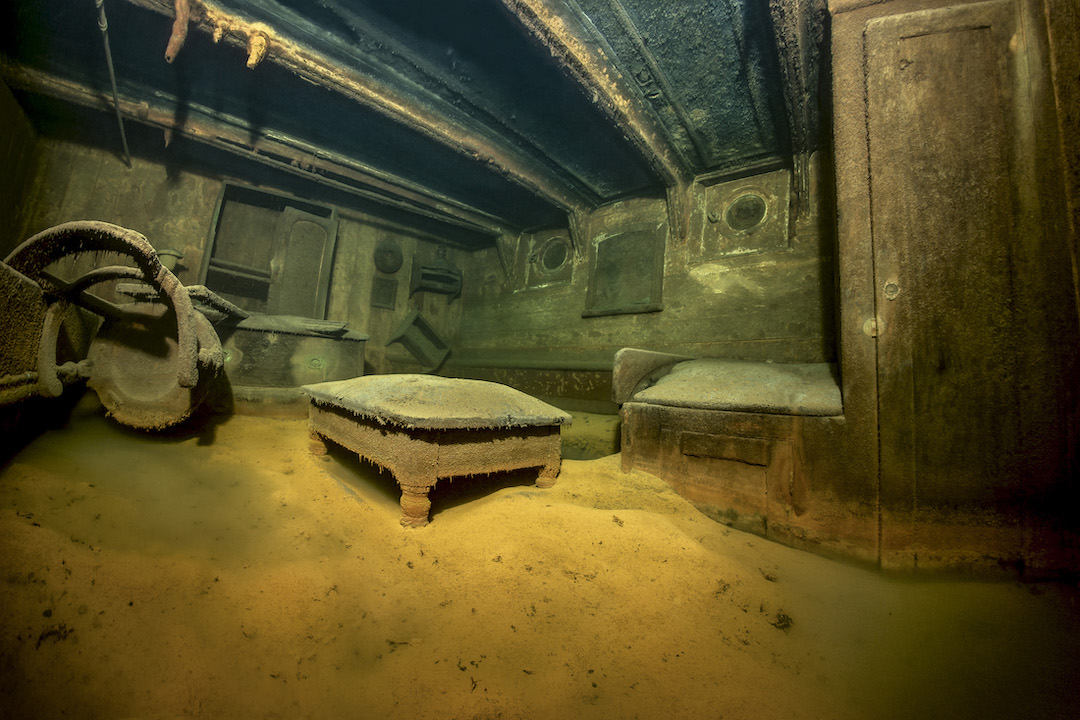 Photographer: Jonas Dahm
Photographer: Jonas Dahm
Interior spaces are some of a wreck’s most challenging and dangerous parts. Still, they are also highly rewarding to photograph. It’s especially gratifying when you can document an entire scene that has lain undisturbed since the vessel sank. That was the case for many of the photos in this book.
Johan Alexandersson describes the scene in this image: “This captain’s cabin has a serene feeling. A mirror on the wall between the portholes. A chair in the left corner seems to hover in the water next to the captain’s bed. A water jug is on the top shelf in the corner, along with a photograph and barometer. You can’t help but wonder what’s in the cupboard and whether a captain’s uniform is hanging in the wardrobe.”
Sediment has piled up beneath the skylight during the century the Maia has been down here.
Stage 5 of a dive
Our ascent along the guiding rope starts fairly quickly but gradually slows down. To avoid decompression sickness or “the bends,” divers must slowly ascend to the surface in multiple steps. This activity is known as decompression. After 50 minutes at a depth of 55 m (180 ft), this takes a little over two hours. Decompression is necessary because a diver’s body absorbs gas underwater while breathing pressurized gas. The body needs time to expel it gradually. Between 30 and 20 meters, these stops are short, just a minute or two. Closer to the surface, the stops get longer. At four or three meters below the surface, we stay for 30-40 minutes.
What do we do while hanging out on a line in the middle of the sea? We think, philosophize… And feel cold.
We are not made for that environment any more than we are made for outer space.
CARL DOUGLAS – VOICE OF THE OCEAN
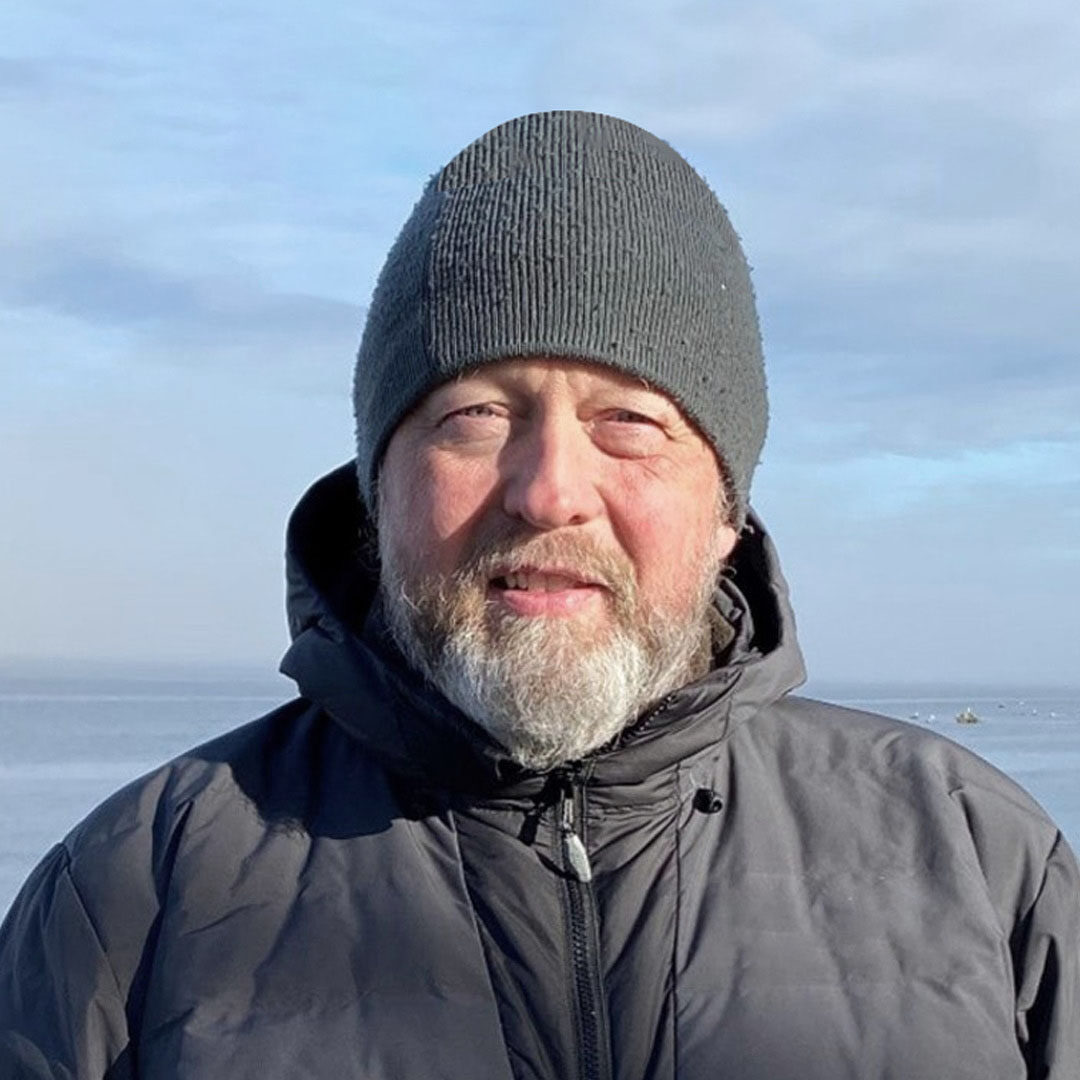
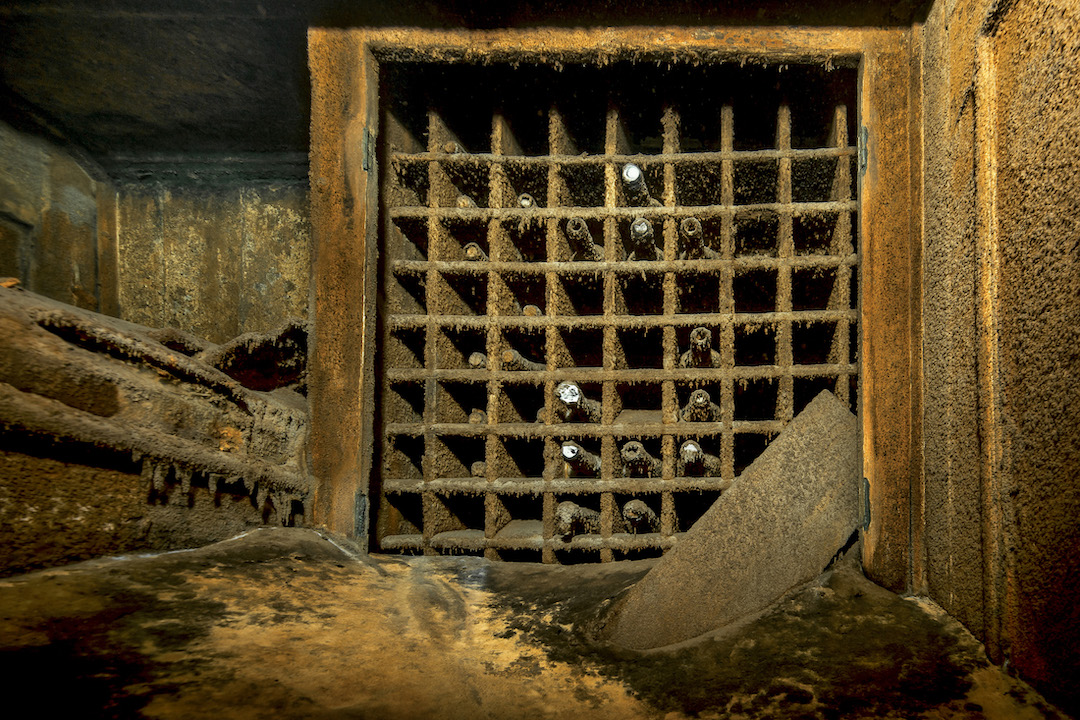 Photographer: Jonas Dahm
Photographer: Jonas Dahm
a small galley with a wine rack containing some bottles. There are four hinges around the edges. There was probably a door with a lock to prevent unwanted visitors from sampling the good stuff.
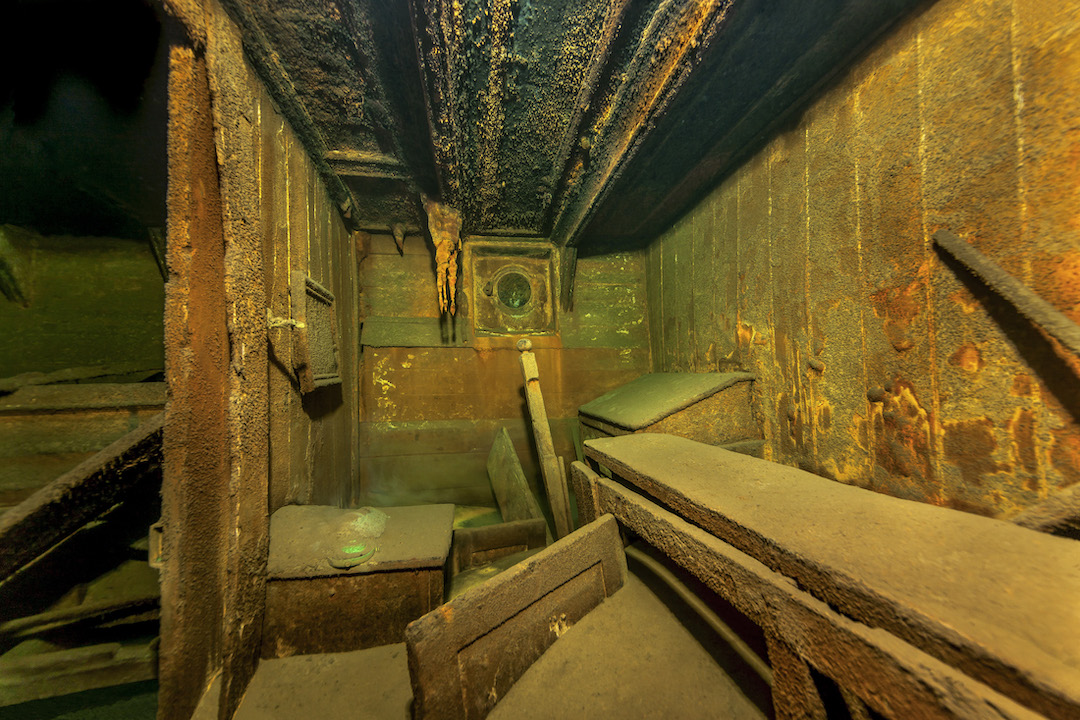 Photographer: Jonas Dahm
Photographer: Jonas Dahm
This picture shows the first cabin on the port side at the bottom of the stairs. That looks like a desk in the far right corner – possibly for the first mate or steward.
Stage 6 of a dive
When our dive computers tell us our decompression is complete, we swim up to the surface to be picked up by the Triad, our diving vessel. It’s important to relax on the boat and not make any physical exertion because our bodies are still under the effects of diving. It’s good to sit down and breathe a little extra oxygen. Drink lots of water. Then we discuss what we did on the dive. What did we see? What have we learned? What can we do better next time?
Then we take care of all our diving equipment and prepare it for the next day. Cameras require special care and attention. We swap out the memory cards and review the new photos to conceive new ideas, a new angle, or different lighting — a group effort.
Before leaving the site, we pick up the buoy, guiding rope, and weight. We always endeavor to leave the dive site just as we found it.